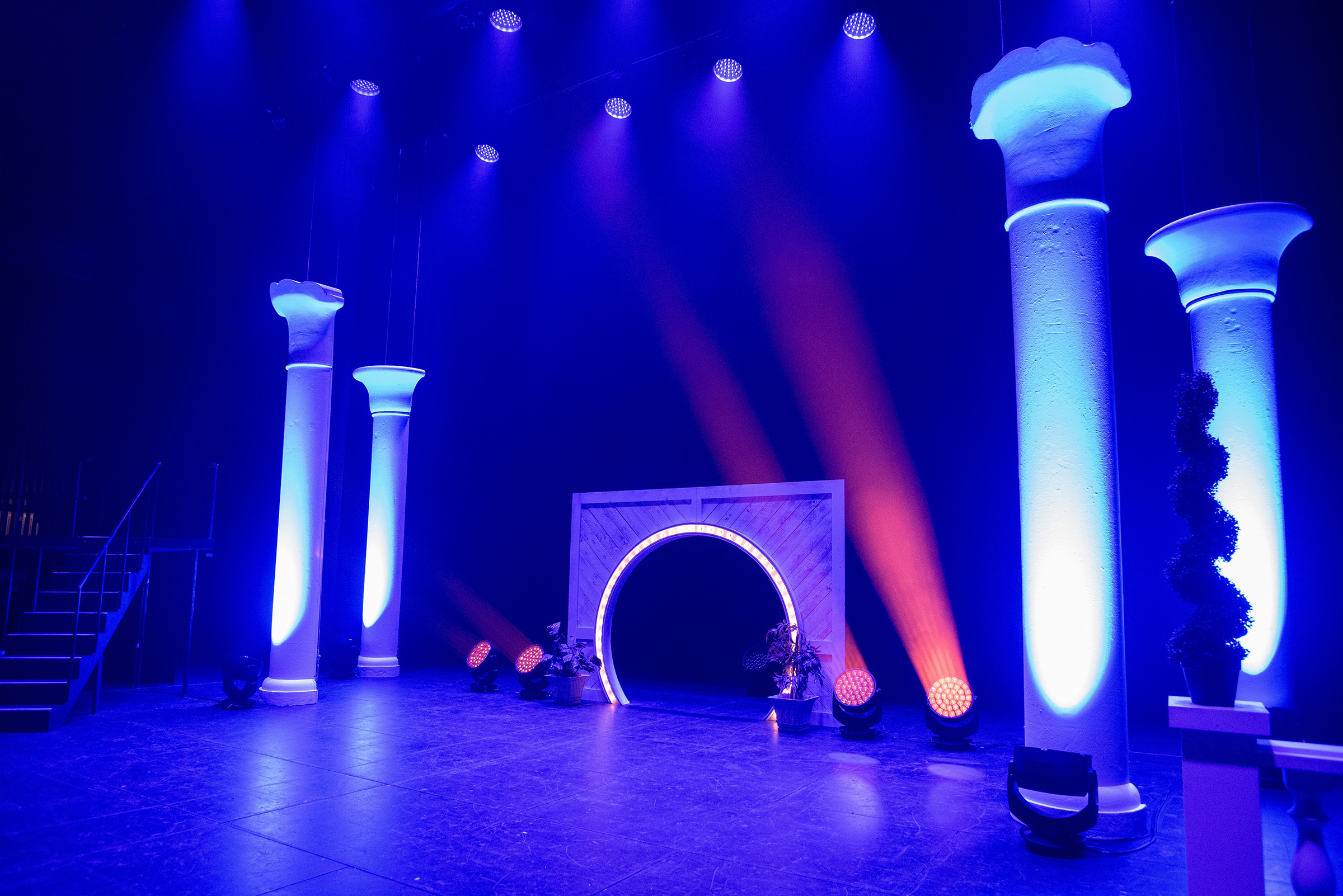LOS ANGELES – Anyone who has ever had a child knows this scenario: You buy them a Harry Potter this or a Barbie doll that, and the next year they just want the next bigger — and more expensive — one. It’s usually a joy-producing experience on both ends. So imagine Scott Humphrey’s delight when he and his trio of companies (Staging Dimensions, Light Action and Applied Electronics) were asked by the people at Mattel to bring an even bigger Hot Wheels track to life than the one they built last year.
In May of 2011, Humphrey and his team staged a launch of a new promotional campaign that was record-breaking and spectacular: to kick off a new line of Hot Wheels cars, they built a life-size “track” and hung it on a “door” at the Indianapolis 500. It was crazy successful. By the time a PLSN article on it rolled out last year, Hot Wheels had gotten the exposure they dreamed of, including 400,000 hits on their site and a YouTube video with 4.5 million views (as this article is written, that video has had 12 million views).
Fast-forward to this summer, and the campaign has “grown” a year older, with a new toy to promote. So they naturally turned to Staging Dimensions for “more.”
 “What we created was a record-breaking double loop — six stories high — which had two cars going through it,” Humphrey explains. It was to promote their new Double Dare Snare, and “basically we were given the model of the toy to build for real cars!” he laughs.
“What we created was a record-breaking double loop — six stories high — which had two cars going through it,” Humphrey explains. It was to promote their new Double Dare Snare, and “basically we were given the model of the toy to build for real cars!” he laughs.
Mattel approached Staging Dimensions after the first of the year. By February, some preliminary designs were put together, and the new challenges were clear. “First of all, they wanted two cars, so the first question was, did they want both to go at the same time, or one after another?” It was the latter. “Then it was, do they want a jump landing?” Affirmative.
The stakes were high as the safety of the professional drivers (Tanner Foust and Greg Tracy) was imperative. They calculated a design of the loop that made sense and pinpointed the speed the cars needed to be at to make it around the loop. It quickly became all about the G-forces — first, in terms of the structure, and how strong it would need to be; then, in terms of the drivers — how much they could handle before blacking out. “Of course, if they went too slow, you can guess what would happen….”
 After more number-crunching, the ideal track speed turned out to be between 48 and 58 miles per hour. “The max was 60 miles per hour, as in the driver could go 60 and the structure would be fine,” Humphrey says. If the loops were a clock, at 8:00, there were just under 7 Gs; at 12:00, 2 Gs; and at 4:00, 7 Gs again. A three-to-one safety ratio meant that the structure would have to prove sound enough to handle three times the anticipated forces exerted upon it.
After more number-crunching, the ideal track speed turned out to be between 48 and 58 miles per hour. “The max was 60 miles per hour, as in the driver could go 60 and the structure would be fine,” Humphrey says. If the loops were a clock, at 8:00, there were just under 7 Gs; at 12:00, 2 Gs; and at 4:00, 7 Gs again. A three-to-one safety ratio meant that the structure would have to prove sound enough to handle three times the anticipated forces exerted upon it.
The result: the loop structure incorporates a total 300,000 pounds of steel, with the ramp and run-ins comprised of a combination of steel and plywood. Although some of last year’s Hot Wheels components were used again this year — notably the take-off and landing ramps — most of the structural elements for this year’s stunt had to be newly created.
“Fabricating it was difficult,” Humphrey admits. As with last year’s Hot Wheels jump, the track was built in sections, this time with a total of 48 pieces. Logistically, only six pieces could get on a trailer at a time. As parts were finished, they were loaded up and moved out, shipping every two or three days in the course of a three-week period. It was all hands on deck, with Humphrey’s employees working around the clock. “When you’re dealing with steel, it’s more difficult because it is not as forgiving as aluminum, so everybody here worked long, hard hours.”
Time was not on their side. “Our biggest challenge was manufacturing in the time frame,” Humphrey says. Originally, the client was to give them nine weeks, but suddenly the team at Staging Dimensions was looking at only five weeks to complete the project after final approval from Mattel. “That was the most stressful part,” Humphrey admits.
 The Staging Dimensions structure was put together in El Toro, CA for three days of tests with a drone car that was driven remotely. “They actually crashed the car to see what the structure would do, and our structure withstood that,” Humphreys says. “And we had a net system designed in case the car wasn’t going fast enough to keep the driver from being hurt,” and “once the drivers came on the scene, they had additional demands, which we accommodated.”
The Staging Dimensions structure was put together in El Toro, CA for three days of tests with a drone car that was driven remotely. “They actually crashed the car to see what the structure would do, and our structure withstood that,” Humphreys says. “And we had a net system designed in case the car wasn’t going fast enough to keep the driver from being hurt,” and “once the drivers came on the scene, they had additional demands, which we accommodated.”
After the testing period, the structural elements were shipped to the X Games site near Staples Center in Los Angeles. Once on site, the ground crew inevitably ran into a couple of quirks, which might be expected with a structure on this scale, keeping the team busy making the necessary adjustments.
Then, on June 30, the two drivers got in their cars (which were made to look like the Hot Wheels toys they were promoting) and went through the 66-foot-tall loops at 52 miles per hour, pulling those 7Gs. The cars bounced a bit but landed safely after the jump, earning a spot in the Guinness Book of Records. And the YouTube video of the loop and jump has already been viewed more than three million times.
 “I am proud that we have completed another event where we utilized several of the services that we offer into one project,” Humphrey says. “Design, engineering, custom fabrication, and installation of a successful project like this really gives a feeling of satisfaction to everyone involved. The three companies provides a unique platform to tackle unusual custom projects like this.”
“I am proud that we have completed another event where we utilized several of the services that we offer into one project,” Humphrey says. “Design, engineering, custom fabrication, and installation of a successful project like this really gives a feeling of satisfaction to everyone involved. The three companies provides a unique platform to tackle unusual custom projects like this.”
So all this begs the question: what will Mattel want next year? “Who knows!” he laughs. “We have no idea. They come up with the gags and base it around marketing.”
For a YouTube video showing the Hot Wheels Double Loop Dare, CLICK HERE.



